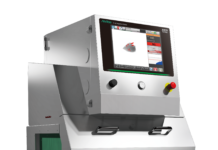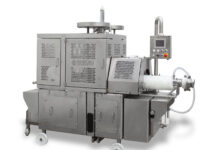According to data from Oxfam (Oxford Committee for Famine Relief), the ecological footprint, in terms of carbon dioxide equivalent emissions CO2-eq, of the leading Big10 multinational companies of the Food and Beverage industry exceeds that of the entire Scandinavian Peninsula. Not only, but if these companies together were a single country, they would be the world’s 25th most polluting emitter of CO2-eq. Considering that the food sector accounts for more than 25 percent of the global carbon dioxide equivalent emissions, it is obvious that the same sector has a significant influence also on global warming and, for this reason, without an effective contribution of the Big10, the Kyoto Protocol targets are far from being achieved. As is widely known, among food products, bovine meat products have the highest environmental footprint, especially due to the high impact of so-called biogenic emissions, intrinsic of the animal. They account for more than 18 kg of CO2-eq emissions for each kilogram of beef. In the case of pork, the specific emissions of carbon dioxide equivalents drop below 4 per kg per animal. For such reason, these food products are often, rightly or wrongly, designated as being responsible of the Carbon Foot Print of the entire food sector. This is why many consumers, especially those being closer to radical environmental ideas, call upon to boycott their consumption, favouring vegan or vegetarian diets, probably pushed more by the vogue of the day than by genuine convictions, better if supported by valuable scientific knowledge. To all this one must add the financial and economic crisis, which during the last few years has hit all countries, though in an uneven way. The food sector registered a decline in consumption, with a shift towards low-price products. And as is easily understood, meat is certainly not the lowest-cost food. The result of this environmental-economical relationship in the last 6 years has resulted in a considerable decrease in the number of animals, which only in Italy is estimated around 2 million livestock, of which 250 thousand cattle, 800 thousand pork and approx. 1 million sheep. Therefore, special attention must be paid to the protection of national excellence in sectors already affected by unfair competition in the past, with imports of low-cost low-quality raw materials. Thankfully, the new Regulation for meat will protect the “Made in Italy”. However, a strict application of this regulation is necessary, which will be only possible if, next to the controls performed by the responsible authorities, trade associations will be able to control and, if necessary, report violations committed by their members. In the year of Expo, a compact Italian team can reasonably be expected, formed by all operators of the food sector, ready to turn the Universal Exposition into an event that will launch a major long-lasting change of the Country.
© Tecniche Nuove Spa • All rights reserved. Registered office: Via Eritrea 21 - 20157 Milano - Italy. Issued and fully paid-up share capital: 5.000.000 euro. Tax code, VAT & registration within the Italian Business Register of Milano: 00753480151




